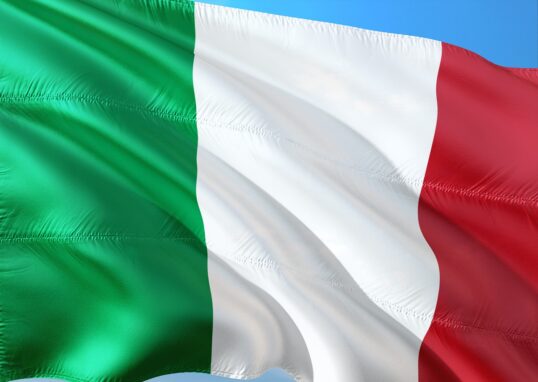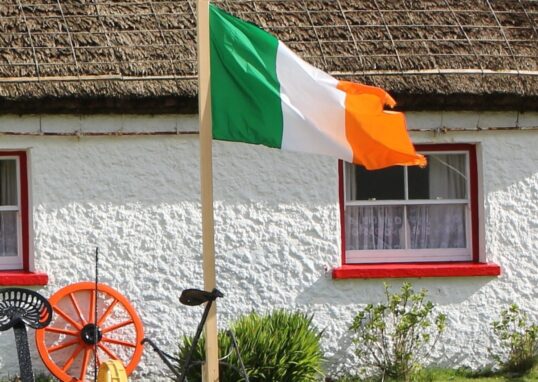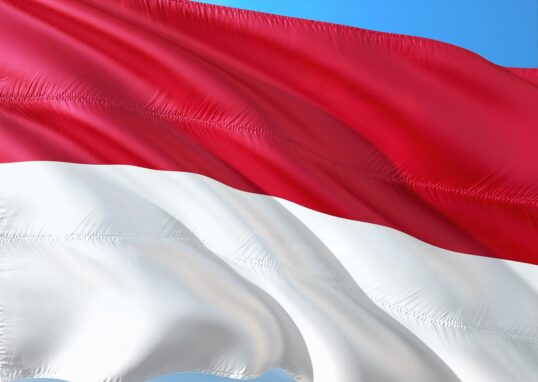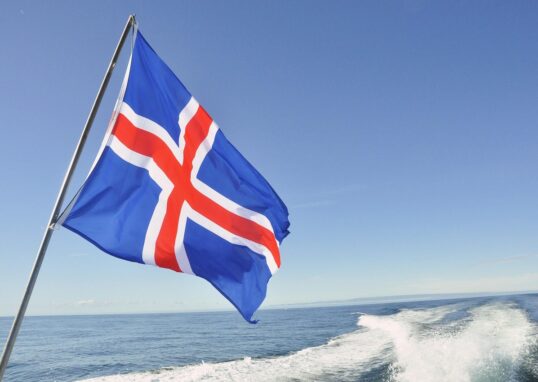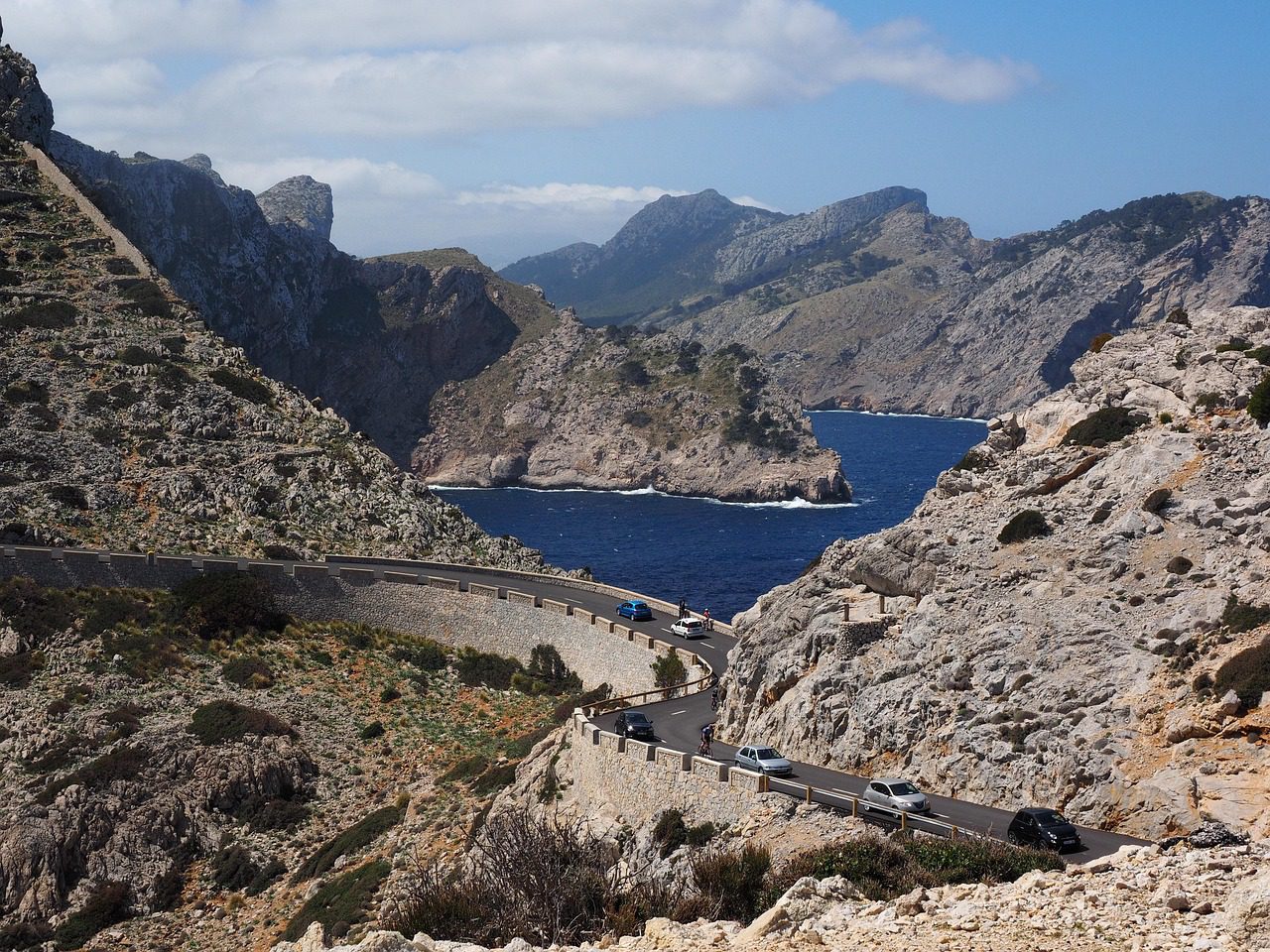
🌄 Serra de Tramuntana – The Mountain Heart of Mallorca
The Serra de Tramuntana is a beautiful mountain range on the island of Mallorca, the biggest of Spain’s Balearic Islands. It stretches along the northwestern part of the island, forming an extensive and spectacular chain of peaks, valleys, and cliffs. This is one of the most beautiful natural landscapes in the Mediterranean, steeped in history, culture, and picturesque beauty. The Serra de Tramuntana was declared a UNESCO World Heritage Site in 2011 because of its cultural and environmental value. It is not just a range of mountains but a living landscape-a place where people, nature, and tradition have existed together for ages. 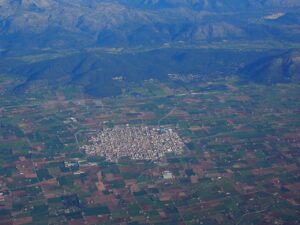
Geography and Natural Beauty
From Andratx in the southwest to Cap de Formentor in the northeast, the Serra de Tramuntana stretches for about 90 kilometers. It covers about 30% of the total area of Mallorca. The highest peak is the Puig Major, which rises 1,445 meters above sea level. It is also the highest mountain in the Balearic Islands. Other famous peaks include Puig de Massanella, Puig Tomir, and Puig d’en Galileu. Among the most famous natural features is the Torrent de Pareis, a deep canyon ending at the sea near Sa Calobra. The rain-catching mountains send water underground, feeding springs and reservoirs. This water system has supported farming and life on the island for centuries. The farmers constructed terraces, stone walls, and irrigation channels that all go perfectly together with the mountainous landscape, thus achieving man-made harmony with nature.
History of the Serra de Tramuntana
The history of the Serra de Tramuntana is long and fascinating. People have inhabited this place since prehistoric times. Early settlers here built stone houses and burial sites. The island gained fame for its olive oil and wine during the Roman rule. Later, during the Moorish period, from the 8th to 13th century, the Arabs introduced improved irrigation, agriculture, and different crops such as oranges and almonds. In the 13th century, when the Christians reconquered Mallorca, they built churches, monasteries, and villages that still survive today. Most of these medieval villages had been built on the mountaintops for protection and cool air. Centuries passed and the Serra de Tramuntana continued to be a land of shepherds, farmers, and fishermen.
Cultural Heritage
The Serra de Tramuntana represents a special cultural heritage linked to the land. So valuable is the technique that it now figures as part of UNESCO’s Intangible Cultural Heritage. You can feel the craftsmanship and patience that built them when walking along these paths. The region is also rich in religious sites: monasteries such as Lluc Monastery and Valldemossa Charterhouse became spiritual centers and are today of the most important tourist destinations. The cultural landscape also consists of local traditions, festivals, and food. People from Serra de Tramuntana take pride in their identity, where mountain life mixes with the charm of the Mediterranean.
Villages and Towns of the Serra de Tramuntana
The mountains are dotted with small, picturesque villages that could easily have been plucked from another time. Let’s explore some of the most famous ones.
Valldemossa
Valldemossa is one of the most beautiful villages in Majorca. It is set high in the mountains, enclosed by olive groves and forests. It is famous for its Carthusian Monastery, which hosted composer Frédéric Chopin and writer George Sand during the winter of 1838. Their stay made Valldemossa famous throughout the world. It is a village perfect for walking; cobbled streets, stone houses, and balconies decorated with flowers. One of the most famous local pastries, coca de patata, should be tried with a cup of hot chocolate.
Deià
Deià is a small coastal village that appeals to artists, writers, and dreamers. It holds within itself a magic light that has inspired creativity for decades. Here lived the famous poet and writer Robert Graves for many years, and now his house is a museum. Deià is built on terraces, rising from the sea to the mountains. The views are indeed breathtaking, particularly at sunset. You can walk down to Cala Deià, a rocky cove with crystal-clear water. One of the most charming swimming areas in the island.
Sóller
Sóller is a larger town located in a green valley filled with orange and lemon trees. It is known as the “Valley of Gold,” not for its gold, but for its golden oranges. In the center of this town, there is Plaça de la Constitució, a lively square with cafes, restaurants, and the Church of Saint Bartholomew. Modernist-style buildings line the streets, built by locals who, returning from France with new ideas, constructed them. A historic wooden tram connects Sóller with the nearby port, Port de Sóller. This tram has been running since 1913 and is an iconic symbol of the town. The port area is ideal for relaxing by the sea, sailing, and trying fresh seafood.
Fornalutx
A few kilometres from Sóller is Fornalutx, a village that is often called the most beautiful in Spain. It is surrounded by mountains and orange groves. The narrow stone streets and red-roofed traditional houses give the place a fairy-tale feel. This village has won awards for its preservation and cleanliness. It holds a Festival of Saint Bartholomew every September, full of local music, dancing, and joy.
Banyalbufar
Banyalbufar is a small village that has been built on the terraces dropping down to the sea. The most impressive terraces in the whole Serra de Tramuntana are found here. They were originally built by the Moors to grow grapes and olives. In Arabic, the name “Banyalbufar” means “vineyard by the sea.” Nowadays, you are still able to taste the local Malvasia wine produced from grapes of these ancient vineyards. The sight of the sea at sunset is unforgettable.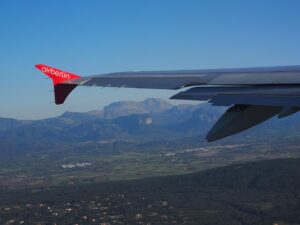
Esporles
Esporles is a quiet village near Palma, surrounded by mountains and forests. It is famous for its traditional houses, among other things, and the La Granja Estate, which is a very beautiful mansion showcasing how wealthy families lived centuries ago. Inside La Granja, you will find antique furniture, clothes, and old workshops. There are gardens, fountains, and peacocks roaming free outside.
Lluc Monastery
In the heart of the mountains lies the Monastery of Lluc, the spiritual center of Mallorca. It has been a place of pilgrimage for centuries. The monastery houses the Virgin of Lluc, which is a small dark statue believed to have miraculous powers. It seems to be situated amidst forests and has guest rooms for pilgrims and travelers. You can hike nearby trails, tour the botanical garden, and hear the famous boys’ choir, the Escolania de Lluc, which performs regularly.
Nature and Wildlife
Serra de Tramuntana is a paradise for nature lovers. Its forests are mainly composed of pine, oak, olive, and almond trees. During the spring, these hills become white and pink with almond blossoms. Many species of animals and birds can be found in mountains. You can see wild goats, falcons, owls, and the rare black vulture, one of the largest birds in Europe. Throughout the range, there are hundreds of hiking and cycling routes. Some of the most famous include:
- Torrent de Pareis Trail: a demanding but beautiful walk through a narrow gorge. The Puig Major hike-for those who need panoramic views of the island. Each of the trails reveals another face of the mountain: cliffs, forests, terraces, and sea views.
Food and Local Products
The Serra de Tramuntana has its own delicious food, too. The main treasures are local olive oil, honey, almonds, and oranges. The olive oil produced by the Mallorquina olive is golden and fruity. Traditional dishes include: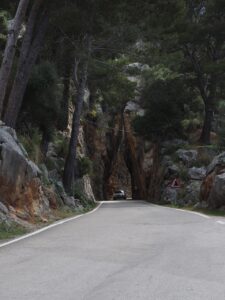
- Pa amb oli – bread with olive oil, tomato and ham.
- Tumbet – layers of fried vegetables with tomato sauce.
- Frito mallorquín: fried meat and vegetables seasoned with herbs.
- Each village has its own bakeries and small restaurants serving local flavors. Also popular as souvenirs are wine from Banyalbufar, orange liqueur from Sóller, and homemade cheese.
Tourism and Activities
Tourism in the Serra de Tramuntana is respectful and focused on sustainability. They come for hiking, cycling, photography, and cultural tours. Small country hotels and family-run inns extend a traditionally warm hospitality. Those serpentine mountain highways are a favorite among professional bicycle racers. Hikers follow ancient pathways that link villages. It is not uncommon for tourists to spend time on the beaches of Mallorca during the summer and then go to enjoy the cool mountain air. Other common events during the year include cultural events, local markets, and art exhibitions.
Surrounding Places
The Serra de Tramuntana is one of the most beautiful regions in the Balearic Islands, a mountain range stretching across the northwest coast of Mallorca, Spain. It is a UNESCO World Heritage Site because of its stunning scenery, quaint villages, and very deep cultural heritage. However, the magic of Serra de Tramuntana extends beyond its peaks and valleys. Around it, there are a number of towns, beaches, and historic places to make it one of the most varied locations around Spain. The following are some of the surrounding places that complement the majesty of Serra de Tramuntana: 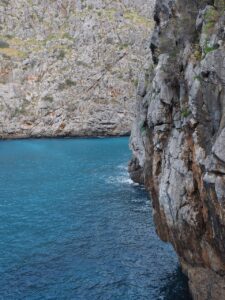
Palma de Mallorca
The capital city, Palma de Mallorca, is located to the south of the Serra de Tramuntana, about 20–30 kilometers from the southern foothills of the mountain range. It is a place which combines the beauty of Mediterranean beaches with a historic old town full of Gothic and Moorish architecture.
Deià
A short drive from Valldemossa, the village of Deià is perched on a hillside which overlooks the Mediterranean Sea. This small town has been an inspiration for artists, musicians, and writers for many decades. The English poet and novelist Robert Graves lived here for much of his life, and his home is now a museum open to visitors. Deià is surrounded by steep, terraced slopes with olive groves that spill down toward the sea. Its narrow streets, lined with vine-covered and flower-decked stone houses, are characteristic. A nearby, small rocky cove called Cala Deià is perhaps the most beautiful place to swim anywhere on the Tramuntana coast. The area is equally popular with hikers, as trails climb to spectacular views and thread through forests of pine.
Sóller and Port de Sóller
Further north now lies the Valley of Sóller, another special place, neighboring the Serra de Tramuntana. The town is known for its orange and lemon groves, while a striking main square with cafés surrounds the impressive Church of Sant Bartomeu. A historic wooden train constructed in 1912 runs through the mountains from Palma to Sóller, offering some very beautiful scenery. Equally as famous is the short tram ride from the town of Sóller down to the port in Port de Sóller. Port de Sóller is a small coastal village with a sandy bay and calm blue waters. It’s a favorite spot for swimming, dining, and generally relaxing. Restaurants surround the bay, and the sunsets here are just magical.
Fornalutx
Often called “the most beautiful village in Spain”, Fornalutx lies just a few kilometers from Sóller, deep in the Serra de Tramuntana. The village is a maze of steep cobbled streets, traditional houses, and colorful flower pots. It is surrounded by terraced hillsides covered with olive trees and citrus plantations. The visitors like to walk along the narrow lanes because in every corner or square, there is a postcard view. Its central Plaça d’Espanya is the heart of this village and an ideal spot for having coffee while watching local life.
Pollença and Port de Pollença
At the northernmost tip of the Serra de Tramuntana, the charming town of Pollença was founded by the Romans and retains much of that ancient charm. One of the most popular attractions in this area is the Calvari Steps-a set of 365 steps leading up to a chapel. The climb features a panoramic view of the town and the various valleys
Lluc Sanctuary
It dates back to the 13th century and is set among forests and mountains. It also houses the Black Madonna, named “La Moreneta,” sacred to the people of Mallorca. The area around Lluc is ideal for hiking and nature walks. The Botanical Garden of Lluc displays native mountain plants and provides insight into the region’s ecology.
Banyalbufar and Estellencs
On the coast of Tramuntana, there are two lesser-known villages that stand out: Banyalbufar and Estellencs. These small villages lay on hillside terraces that go down in steep slopes towards the Mediterranean Sea. Banyalbufar is known for its ancient Arab-built terraces used to grow grapes and olives. Visitors very much enjoy exploring the old streets, stone walls, and the views of the sea from every corner. A few kilometres inland, Estellencs is a quiet haven of stone houses and spectacular sea and mountain views. The tiny pebble cove of Cala Estellencs is a magical spot for a secluded swim in crystal waters.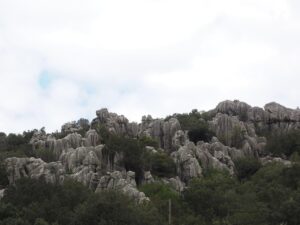
Sa Calobra and Torrent de Pareis
On the west coast of Serra de Tramuntana lies Sa Calobra, which is one of the most impressive places due to its dramatic coastal road and natural beauty. The twisting road leading down to Sa Calobra constitutes one of the most beautiful drives in Europe. Torrent de Pareis is at the end of the road, a deep canyon carved by a river that opens dramatically to the sea. The beach here is surrounded by towering cliffs, creating a breathtaking setting. A trek through the canyon is popular among adventurous souls and photographers.
Alcúdia and Cap de Formentor
Northeast of the Tramuntana range, the old town of Alcúdia presents another layer of Mallorca’s charm. With narrow streets, Roman ruins, and bustling markets, Alcúdia is surrounded by medieval walls that attract many visitors. The nearby beaches of Playa de Muro and Alcúdia Bay are among the island’s best. Driving north from Alcúdia, travelers reach Cap de Formentor, the northernmost point of Mallorca. The serpentine coastal road leads to steep cliffs, pine forests, and observation points that let one gaze out over the deep blue Mediterranean. The Formentor Lighthouse is proudly situated at the very end and offers unforgettable vistas at sunrise and sunset.
Preservation and Future
Conservation of Serra de Tramuntana is paramount, with locals and authorities at the helm. The dry stone walls, water systems, and traditional architecture are all fragile but important features. Many organizations work to keep the hiking paths and protect the environment.
Conclusion
The Serra de Tramuntana is far more than a mountain range; it’s the throbbing heart of Mallorca. Their peaks reach for the sky, while the valleys bear stories of human effort, faith, and imagination. From the hills with stepped vineyards in Banyalbufar to tranquil lanes in Fornalutx, every nook exudes charm. This combination of nature, culture, and history combines to make this a unique destination. People come here not just to look upon the mountains but to experience peace, tradition, and the spirit of the island. Serra de Tramuntana reminds us that the coexistence of man and nature and their creations can be eternal. The surrounding places of Serra de Tramuntana create a perfect blend of history, culture, and natural beauty.

